Discover the best (and most pungent) foods of Iceland! From creamy skyr to fermented shark, explore Iceland’s Viking heritage with local tips and sustainable travel insights.
Iceland, the land of fire and ice, boasts a culinary tradition as rich and varied as its landscapes. From ancient preservation methods to modern gastronomic innovations, Icelandic cuisine offers surprisingly delicious and adventurous options, loaded with foraged produce and bread cooked by the heat of volcanos.
At Cerca Travel we’ve traversed the globe, and for the fully sound-designed experience you’ll want to listen to our Iceland Guide podcast – an immersive and comprehensive guide to this magical place. For you readers, here’s the shortcut – a curated list of our nine signature Icelandic foods—the good, the bad, and the stinky.
1. Skyr: Creamy Super-Food

Skyr is a traditional Icelandic dairy product, resembling yogurt but technically a cheese. Introduced by Norwegian settlers over a thousand years ago, skyr has been a staple in the Icelandic diet ever since. Its high protein content and creamy texture made it a vital source of nutrition during harsh winters.
Today, skyr is enjoyed plain or flavored, often accompanied by berries or honey. In recent years skyr has become popular in the United States and throughout Europe and is accessible in higher-end grocery stores, but for the real deal, you need to try it fresh in Iceland.
Where to Try
Reykjavík: Skyrgerðin offers a delightful skyr-tasting experience, showcasing both traditional and innovative flavors.
Selfoss: Skyrland – a cultural stop, part of the Old Dairy, you can explore the 1000 year old history of skyr dating back to the Vikings. The nextdoor Skyr bar serves up bowls and smoothies. A perfect stop on your trip around Iceland’s Golden Circle.
Sustainable Tip: Opt for locally produced skyr to support sustainable dairy farming practices in Iceland.
2. Hákarl: The Fermented Shark

Hákarl, or fermented Greenland shark, is perhaps Iceland’s most infamous dish. This is a dish born out of ingenuity and resourcefulness – the shark, eaten fresh, is toxic. Early Icelanders developed a fermentation process to make it edible. This involved burying the shark meat, allowing it to ferment, then hanging it to dry. You have to wonder how they came up with this – and who was willing to test it!
It remains a unique, pungent and decidedly acquired taste.
Where to Try
Reykjavík: Íslenski Barinn serves hákarl as part of their traditional Icelandic menu.
Sampling hákarl is often accompanied by a shot of brennivín, a local schnapps, to cleanse the palate and help you stomach the flavor!
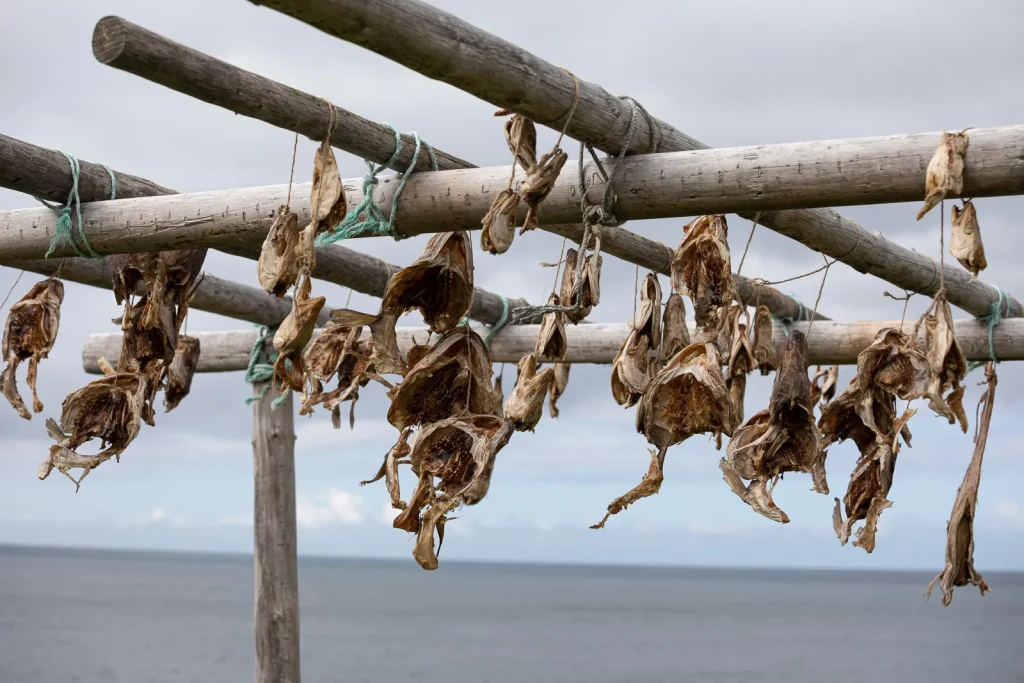
3. Harðfiskur: Dried Fish
Harðfiskur, or dried fish, sometimes called stockfish, has been a portable protein source for Icelanders for centuries. Traditionally made from cod, haddock, or wolffish, the fish is wind-dried until it reaches a jerky-like consistency. It was a vital food for seafarers and farmers, providing essential nutrients in a lightweight form.
Dried cod is how Iceland survived for 1000 years. Check out the Cerca Travel Iceland Guide for a directions to a locals-only spot where the dried cod hangs in rows, waving in the wind as it has done for generations. (Check out the Guide for lots more hidden gems in Iceland, including hiking to natural hot springs.)
Where to Try
- Reykjavík: Kolaportið, the city’s flea market, offers a variety of harðfiskur from different vendors.
4. Hangikjöt: Smoked Lamb

Hangikjöt, meaning “hung meat,” refers to smoked lamb or mutton, traditionally enjoyed during Christmas. The smoking process, using birch or dried sheep dung, imparts a distinct flavor, preserving the meat for extended periods—a crucial practice in Iceland’s past.
Where to Try
Reykjavík: Matur og Drykkur offers a modern take on hangikjöt, blending tradition with contemporary culinary techniques. This is a beautiful little Reykjavík wine bar with a 10 course tasting menu would be a good night out in any city in the world.
Cultural Experience: Salt Eldhús offers cooking classes – sometimes these include Icelandic specialties but check out what’s on offer when you’re planning to visit.
5. Svið: Sheep’s Head
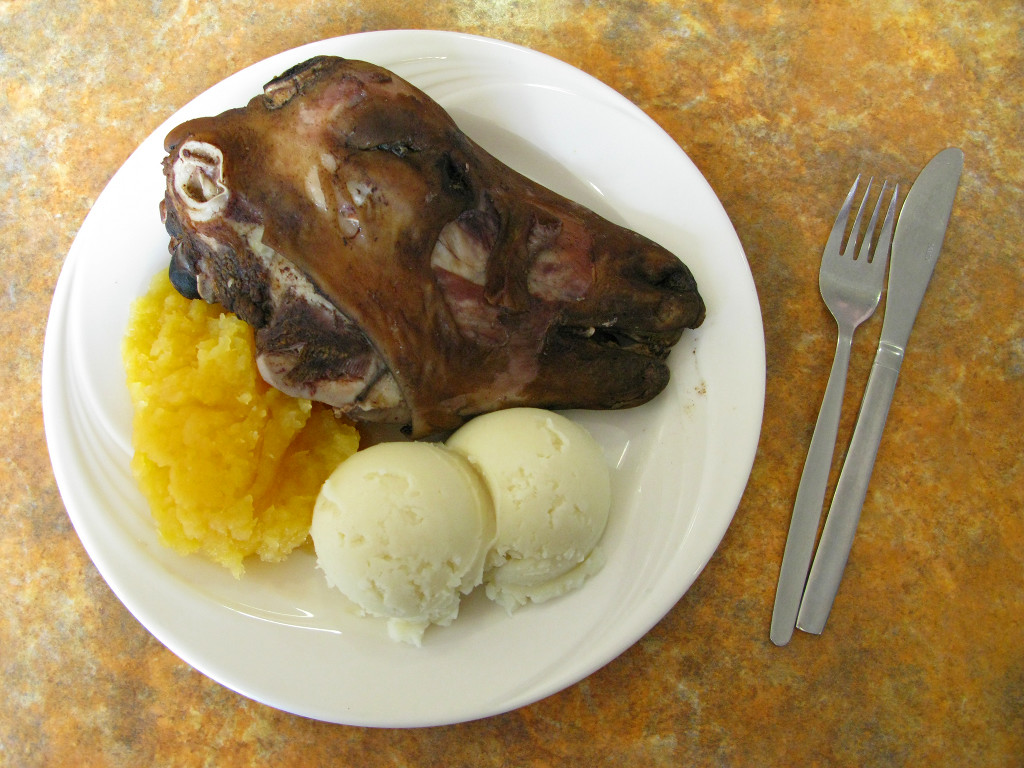
Svið, or singed sheep’s head, harks back to a time when Icelanders utilized every part of the animal. The head is split, singed to remove fur, and boiled. Consuming svið was a practical solution to food scarcity, ensuring no part of the sheep went to waste.
Like other Nordic countries, the sheep’s head is often served on banquet tables around Christmas. In general, Icelanders find this quite tasty – the cheeks are the best part – if you don’t think about it too hard.
Where to Try
- Reykjavík: Fljótt og Gott, located in the BSÍ bus terminal, is renowned for serving traditional svið.
- Reykjavik: Melabúðin, this grocery store usually carries ready-made Svið
6. Rúgbrauð: Dark Rye Bread
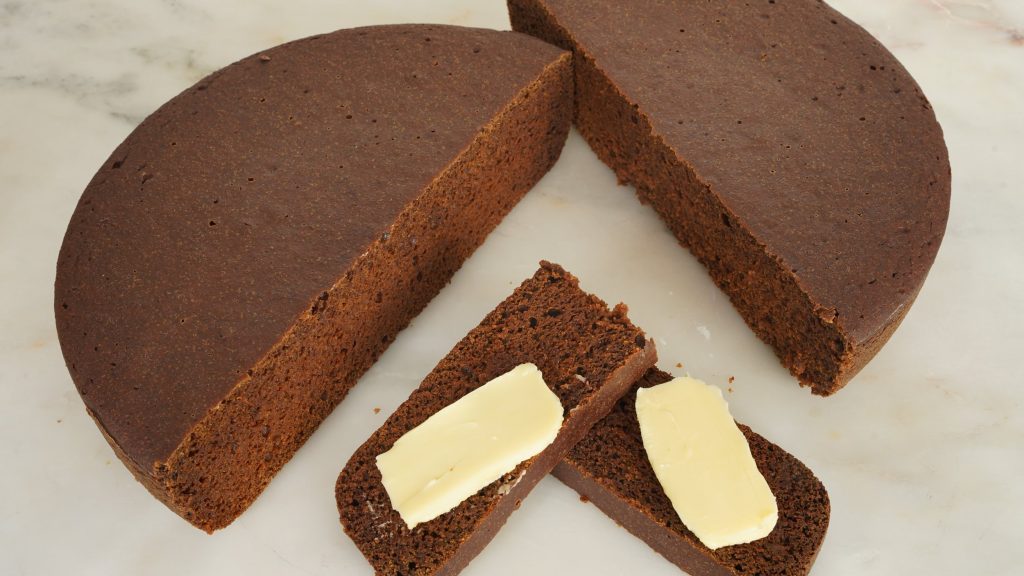
Rúgbrauð is a dense, dark, slightly sweet rye bread, traditionally baked by burying the dough near hot springs, utilizing geothermal heat. The bread is mixed and buried in a pot for 24 hours in the steaming – sometimes bubbling – ground. Then rocks are piled on top to mark the spot – traditionally each baker would have their own design so that they knew which bread to pull out of the earth.
The bread is then often served with butter, smoked lamb, pickled herring, or Icelandic smoked trout (which appears pink like smoked salmon).
Where to Try
Laugarvatn: Laugarvatn Fontana is a hot spring spa and bakery which offers tours demonstrating the geothermal baking process, culminating in a tasting session. In the winter, the steam from the bubbling water will form ice crystals on your eye lashes! An Instagram-ready experience. When you go to Laugarvatn be sure to take advantage of the spa and bathe in hot-spring fed, mineral rich pools, followed by a cooling dip in the lake. Especially in, the winter, where it will be an experience like few others.
Sustainable Tip: Engaging in this experience supports the use of renewable geothermal energy, a cornerstone of Iceland’s sustainability efforts.
7. Plokkfiskur: Fish Stew

Plokkfiskur, translating to “plucked fish,” is a comforting stew made from boiled fish – usually cod, potatoes, onions, and a creamy béchamel sauce. It emerged as a way to repurpose leftovers, embodying the Icelandic ethos of minimizing food waste.
Plokkfiskur, or a version of it, is a staple throughout Iceland and you’ll find it in many places.
Where to Try
Reykjavík: Messinn is a cozy bistro in the heart of downtown, specializing in seafood and celebrated for its hearty and flavorful plokkfiskur.
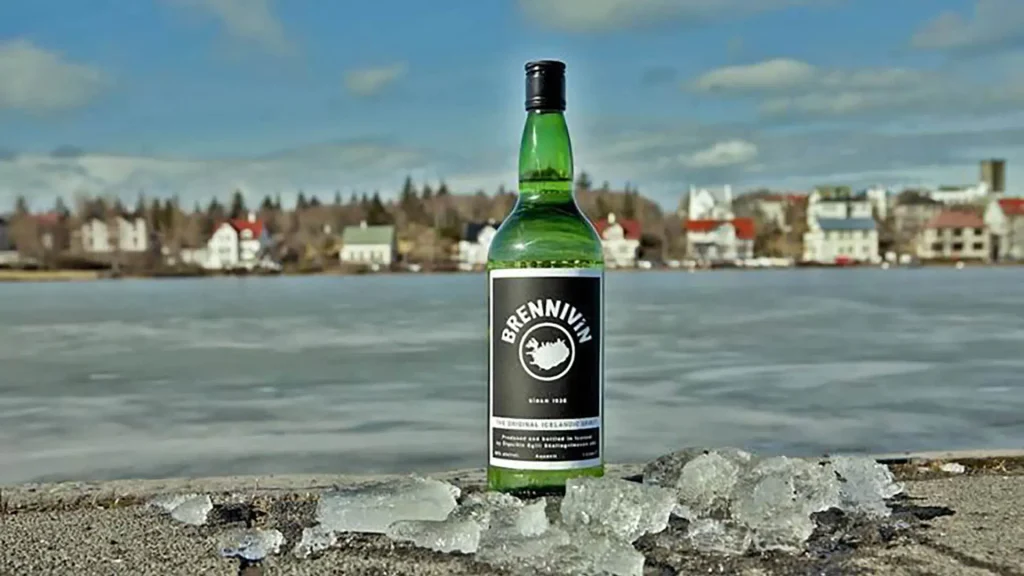
8. Brennivín: The Black Death
Brennivín, ominously nicknamed “Black Death,” is Iceland’s signature distilled beverage. Made from fermented grain or potato mash and flavored with caraway, it was first produced following the prohibition era in the early 20th century. Brennivín is traditionally consumed during midwinter festivals and is the customary accompaniment to hákarl. Most bars in Iceland can serve you up a shot of Brennivín in an iced shot glass, with a good beer alongside.
Where to Try
- Reykjavík: Dill Restaurant, Iceland’s first Michelin-starred establishment, offers a curated selection of Icelandic spirits, including brennivín. Dill is worth a visit whether you like Brennivín or not – so it’s inclusion here is really just a way to say – go to Dill. The tasting menu of foraged and inventive Nordic cuisine is thoroughly worth it. Just plan in advance as reservations can be hard to come by.
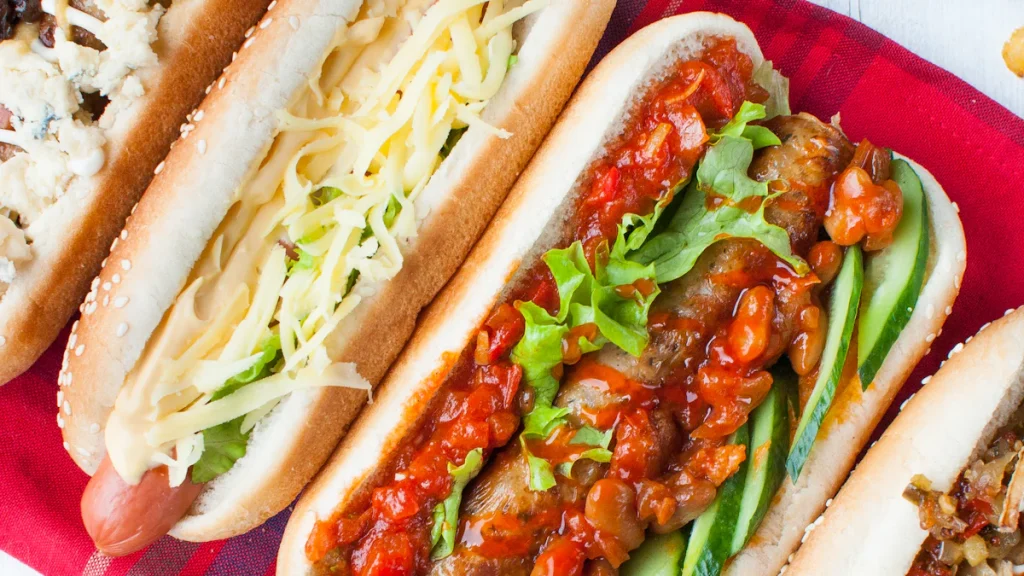
9. Pylsur: The Icelandic Hot Dog
History and Cultural Significance
Pylsur, Iceland’s beloved hot dog, is a must-try. Unlike your standard hot dog, Icelandic pylsur are made primarily from grass-fed lamb, blended with pork and beef. Pylsur gained international fame when Bill Clinton visited the famed Bæjarins Beztu Pylsur stand in Reykjavik, declaring it one of the best hot dogs he had ever tasted. Having tasted a lot of local hotdogs at Cerca Travel, we genuinely agree. This is one of the best.
Icelanders take their pylsur seriously, often ordering them with “eina með öllu” (one with everything), which includes crispy fried onions, raw onions, sweet brown mustard (pylsusinnep), ketchup, and remoulade (a mayo-based sauce with capers and mustard). Get the mustard. Buy a bottle and bring it home with you.
Where to Try
Reykjavík: Bæjarins Beztu Pylsur is the legendary hot dog stand that has been serving customers since 1937.
Akureyri: Akureyri Hot Dog Stand offers an excellent version with local twists.
Whether you’re indulging in creamy skyr, braving the pungent hákarl, or savoring the ultimate Icelandic hot dog, the foods of Iceland offer a deep connection to the country’s natural resources. Traveling as a foodie in Iceland isn’t just about tasting, although that’s the fun part! But it’s also about understanding a way of life shaped by the extreme climate of Iceland.
Iceland is one of the easiest place to make responsible, sustainable food choices, and the country celebrates renewable energy and environmentally conscious agriculture. And cod. So much cod.